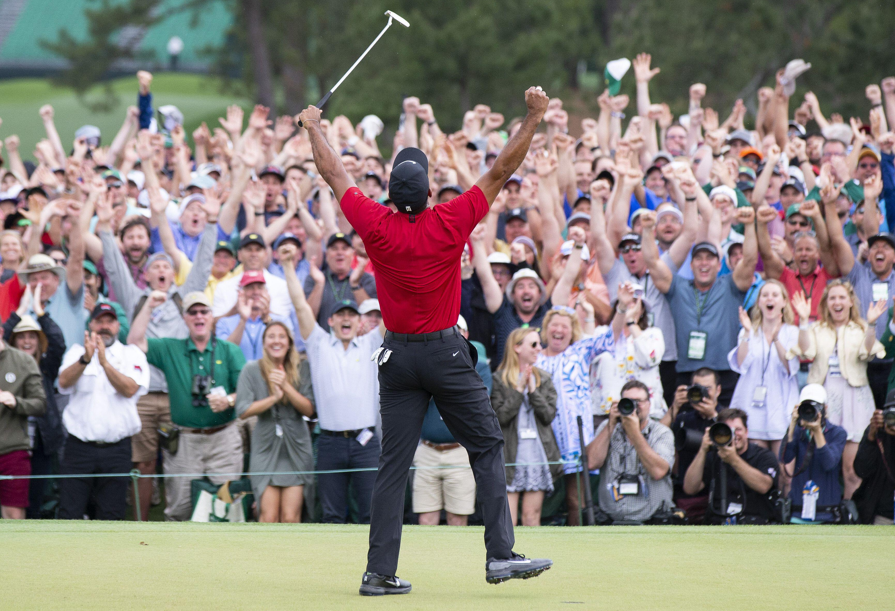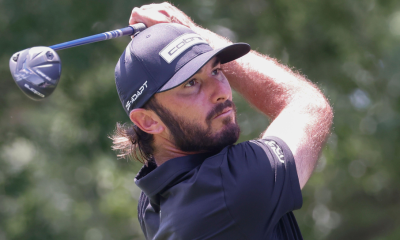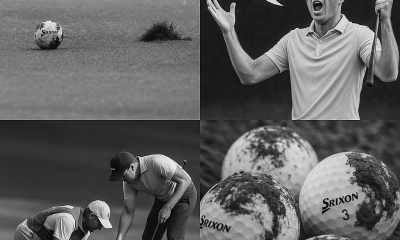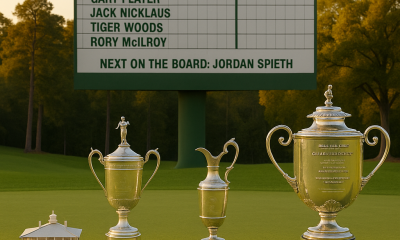Opinion & Analysis
What are the odds? (Hole-in-one, becoming a pro golfer, and more)

Golf has been my faithful companion for 45 years now. My love affair with this magnificent game began in 1980 when I was just 5 years old, swinging clubs that seemed impossibly large in my small hands. Today, at almost 50 (May 24th), I can look back on a life intertwined with golf—not just as a player, but as someone who has made it my livelihood since 1996. Becoming a PGA Professional and Coach in 2009 was the culmination of a journey that started on dewy morning greens all those decades ago.
But as I reflect on my lifetime in golf, I’m struck by something that makes this game so uniquely challenging and rewarding: the sheer improbability of achievement at its highest levels. Golf is perhaps the only major sport where perfection is mathematically impossible, and excellence is statistically improbable.
Let’s explore what makes this game so humbling, yet so addictive, by examining the odds of various achievements.
Coveted Shots
The hole-in-one represents golf’s perfect moment—a single stroke that finds the bottom of the cup. For the average golfer, the odds of making a hole-in-one are approximately 12,000 to 1. For tour professionals, those odds improve dramatically to about 3,000 to 1. I’ve been fortunate enough to witness several, though my own has remained elusive.
Eagles on par-5 holes are more attainable, with odds of about 250 to 1 for average golfers. Tour professionals make eagles on par-5s at a rate of about 1 in every 23 attempts. Eagles on par-4s, however, are far rarer. For amateur golfers, the odds are roughly 6,000 to 1, while tour professionals face odds of about 1,000 to 1.
The double eagle (or albatross)—scoring three under par on a single hole—represents one of golf’s rarest achievements. The odds for an average golfer are approximately 1 million to 1. Even for professionals, it’s about 60,000 to 1. To put this in perspective, the odds of being struck by lightning in your lifetime are about 15,000 to 1—making a double eagle more than four times less likely.
Scoring
Breaking scoring barriers represents significant milestones in a golfer’s journey. Breaking 100 is achievable for most dedicated beginners, with about 55% of all golfers eventually reaching this milestone. Breaking 90 becomes more challenging, with approximately 25% of all golfers achieving this level.
The odds become considerably steeper when we look at breaking 80, with only about 5% of all golfers ever reaching this benchmark. Breaking 70 is rarer still—less than 0.5% of all golfers will ever card a round in the 60s.
And breaking 60? The odds are astronomical.
In PGA Tour history, there have been 15 sub-60 rounds in official events. These include 14 rounds of 59 and one round of 58, which was shot by Jim Furyk. There have been 9 sub-60 rounds on the Korn Ferry Tour. These rounds include a 57, a 58, and seven 59s. Notably, Cristobal Del Solar shot a 57 at the Astara Golf Championship, which is the lowest score ever in a PGA Tour-sanctioned event.
There has been only one sub-60 round on the LPGA Tour, and it was achieved by Annika Sörenstam with a score of 59 in 2001.
The odds of this achievement, even for the world’s elite, stand at about a 1-in-millions (less than 0.0001%).
Handicap
The USGA Handicap System provides another lens through which to view golf’s difficulty. Approximately 50-55% of golfers maintain a handicap above 15, meaning more than half of all dedicated players average at least 20 strokes over par. Only about 25% of golfers achieve a handicap below 10, representing consistent play at a relatively high level.
A scratch handicap (0) is achieved by only about 1.6% of all golfers—an exclusive club indeed. And a plus handicap (+1 or better), indicating a player who consistently scores below par, is the domain of just 0.1% of golfers worldwide. These players represent the elite amateurs and professionals who have mastered the game to an extraordinary degree.
Gaining a College Scholarship
For young golfers dreaming of playing at the collegiate level, the competition is fierce. For men seeking Division I scholarships, the odds are approximately 125 to 1 (about 0.80%), with only about 2,500 spots available nationwide. Division II offers slightly better prospects at about 85 to 1 (1.18%).
Women face better odds due to Title IX requirements and fewer participants overall. The chances of securing a Division I scholarship for women are approximately 65 to 1 (1.54%), while Division II opportunities come in at about 45 to 1 (2.3%). Still, these represent daunting odds for aspiring collegiate golfers.
Playing Professionally
The pyramid narrows dramatically when we examine professional golf. The odds of making it onto the Korn Ferry Tour (the primary pathway to the PGA TOUR) are approximately 5,000 to 1 (just 0.02%) for a dedicated junior golfer. For women, the Epson Tour presents similar challenges with odds around 4,000 to 1 (0.025%).
The DP World Tour (formerly European Tour) and PGA TOUR represent even steeper climbs, with odds of roughly 7,500 to 1 (0.013%) and 10,000 to 1 (0.01%), respectively. The Champions Tour (for players 50 and older) and LPGA Tour present odds of about 6,000 to 1 (0.017%) and 8,000 to 1 (0.0125%).
Winning on these tours represents another quantum leap in difficulty. The odds of winning on the Korn Ferry Tour are approximately 1 in 150 (0.67%) for tour members. On the PGA TOUR, even for card-carrying members, the odds of winning a single event are about 1 in 250 (0.4%). Multiple wins become exponentially more improbable.
The ultimate achievement—winning a major championship—presents nearly insurmountable odds. For a tour professional, the chances of winning a single major are approximately 1 in 500 (0.2%). Winning multiple majors? About 1 in 2,000 (0.05%). And the career Grand Slam—winning all four majors in a lifetime—has been achieved by only six men in the modern era: Gene Sarazen, Ben Hogan, Gary Player, Jack Nicklaus, Tiger Woods, and now, in 2025, Rory McIlroy. The odds? Roughly 1 in 100,000 (0.001%), even for a tour professional.
Despite its Difficulty, Golf is Loved Worldwide
What makes these statistics so fascinating is that despite golf’s notorious difficulty, its popularity continues to soar. In 2024, a record 47.2 million Americans played golf, either on or off the course—a 45% increase since record-keeping began in 2016. On-course participation alone reached 28.1 million, the highest number since 2008, with 28% being female and 25% being Black, Asian, or Hispanic.
Globally, approximately 68 million golfers worldwide participated in the sport in 2024. If we include all individuals who have hit a golf ball with a club, whether on or off a course, the number swells to over 106 million.
This paradox—a game so difficult that statistical excellence is nearly impossible, yet so beloved by millions—speaks to golf’s unique character. Perhaps it’s precisely because perfection remains eternally out of reach that we continue to pursue it. Or maybe it’s because golf, unlike most sports, allows players of vastly different abilities to compete fairly through its handicap system.
Whatever the reason, as I look back on my 45 years with this maddening, beautiful game, I’m struck by how the improbability of mastery has never diminished my love for it. In fact, it may be the very reason I’ve dedicated my life to golf.
In a world increasingly focused on instant gratification, golf remains steadfastly, stubbornly difficult—and that’s exactly what makes it so rewarding when we occasionally, against all odds, achieve moments of excellence.
PGA Professional Brendon Elliott is an award-winning coach and golf writer. You can check out his writing work and learn more about him by visiting BEAGOLFER.golf and OneMoreRollGolf.com.
Editor’s note: “My Take” is an ongoing series where Brendon shares his thoughts and opinions on various aspects of the game and industry. These are Brendon’s opinions and do not necessarily reflect those of GolfWRX, its staff, and its affiliates.
Opinion & Analysis
The 2 primary challenges golf equipment companies face

As the editor-in-chief of this website and an observer of the GolfWRX forums and other online golf equipment discourse for over a decade, I’m pretty well attuned to the grunts and grumbles of a significant portion of the golf equipment purchasing spectrum. And before you accuse me of lording above all in some digital ivory tower, I’d like to offer that I worked at golf courses (public and private) for years prior to picking up my pen, so I’m well-versed in the non-degenerate golf equipment consumers out there. I touched (green)grass (retail)!
Complaints about the ills of and related to the OEMs usually follow some version of: Product cycles are too short for real innovation, tour equipment isn’t the same as retail (which is largely not true, by the way), too much is invested in marketing and not enough in R&D, top staffer X hasn’t even put the new driver in play, so it’s obviously not superior to the previous generation, prices are too high, and on and on.
Without digging into the merits of any of these claims, which I believe are mostly red herrings, I’d like to bring into view of our rangefinder what I believe to be the two primary difficulties golf equipment companies face.
One: As Terry Koehler, back when he was the CEO of Ben Hogan, told me at the time of the Ft Worth irons launch, if you can’t regularly hit the golf ball in a coin-sized area in the middle of the face, there’s not a ton that iron technology can do for you. Now, this is less true now with respect to irons than when he said it, and is less and less true by degrees as the clubs get larger (utilities, fairways, hybrids, drivers), but there remains a great deal of golf equipment truth in that statement. Think about it — which is to say, in TL;DR fashion, get lessons from a qualified instructor who will teach you about the fundamentals of repeatable impact and how the golf swing works, not just offer band-aid fixes. If you can’t repeatably deliver the golf club to the golf ball in something resembling the manner it was designed for, how can you expect to be getting the most out of the club — put another way, the maximum value from your investment?
Similarly, game improvement equipment can only improve your game if you game it. In other words, get fit for the clubs you ought to be playing rather than filling the bag with the ones you wish you could hit or used to be able to hit. Of course, don’t do this if you don’t care about performance and just want to hit a forged blade while playing off an 18 handicap. That’s absolutely fine. There were plenty of members in clubs back in the day playing Hogan Apex or Mizuno MP-32 irons who had no business doing so from a ballstriking standpoint, but they enjoyed their look, feel, and complementary qualities to their Gatsby hats and cashmere sweaters. Do what brings you a measure of joy in this maddening game.
Now, the second issue. This is not a plea for non-conforming equipment; rather, it is a statement of fact. USGA/R&A limits on every facet of golf equipment are detrimental to golf equipment manufacturers. Sure, you know this, but do you think about it as it applies to almost every element of equipment? A 500cc driver would be inherently more forgiving than a 460cc, as one with a COR measurement in excess of 0.83. 50-inch shafts. Box grooves. And on and on.
Would fewer regulations be objectively bad for the game? Would this erode its soul? Fortunately, that’s beside the point of this exercise, which is merely to point out the facts. The fact, in this case, is that equipment restrictions and regulations are the slaughterbench of an abundance of innovation in the golf equipment space. Is this for the best? Well, now I’ve asked the question twice and might as well give a partial response, I guess my answer to that would be, “It depends on what type of golf you’re playing and who you’re playing it with.”
For my part, I don’t mind embarrassing myself with vintage blades and persimmons chasing after the quasi-spiritual elevation of a well-struck shot, but that’s just me. Plenty of folks don’t give a damn if their grooves are conforming. Plenty of folks think the folks in Liberty Corner ought to add a prison to the museum for such offences. And those are just a few of the considerations for the amateur game — which doesn’t get inside the gallery ropes of the pro game…
Different strokes in the game of golf, in my humble opinion.
Anyway, I believe equipment company engineers are genuinely trying to build better equipment year over year. The marketing departments are trying to find ways to make this equipment appeal to the broadest segment of the golf market possible. All of this against (1) the backdrop of — at least for now — firm product cycles. And golfers who, with their ~15 average handicap (men), for the most part, are not striping the golf ball like Tiger in his prime and seem to have less and less time year over year to practice and improve. (2) Regulations that massively restrict what they’re able to do…
That’s the landscape as I see it and the real headwinds for golf equipment companies. No doubt, there’s more I haven’t considered, but I think the previous is a better — and better faith — point of departure when formulating any serious commentary on the golf equipment world than some of the more cynical and conspiratorial takes I hear.
Agree? Disagree? Think I’m worthy of an Adam Hadwin-esque security guard tackle? Let me know in the comments.
@golfoncbs The infamous Adam Hadwin tackle ? #golf #fyp #canada #pgatour #adamhadwin ? Ghibli-style nostalgic waltz – MaSssuguMusic
Podcasts
Fore Love of Golf: Introducing a new club concept

Episode #16 brings us Cliff McKinney. Cliff is the founder of Old Charlie Golf Club, a new club, and concept, to be built in the Florida panhandle. The model is quite interesting and aims to make great, private golf more affordable. We hope you enjoy the show!
Opinion & Analysis
On Scottie Scheffler wondering ‘What’s the point of winning?’

Last week, I came across a reel from BBC Sport on Instagram featuring Scottie Scheffler speaking to the media ahead of The Open at Royal Portrush. In it, he shared that he often wonders what the point is of wanting to win tournaments so badly — especially when he knows, deep down, that it doesn’t lead to a truly fulfilling life.
View this post on Instagram
“Is it great to be able to win tournaments and to accomplish the things I have in the game of golf? Yeah, it brings tears to my eyes just to think about it because I’ve literally worked my entire life to be good at this sport,” Scheffler said. “To have that kind of sense of accomplishment, I think, is a pretty cool feeling. To get to live out your dreams is very special, but at the end of the day, I’m not out here to inspire the next generation of golfers. I’m not out here to inspire someone to be the best player in the world, because what’s the point?”
Ironically — or perhaps perfectly — he went on to win the claret jug.
That question — what’s the point of winning? — cuts straight to the heart of the human journey.
As someone who’s spent over two decades in the trenches of professional golf, and in deep study of the mental, emotional, and spiritual dimensions of the game, I see Scottie’s inner conflict as a sign of soul evolution in motion.
I came to golf late. I wasn’t a junior standout or college All-American. At 27, I left a steady corporate job to see if I could be on the PGA Tour starting as a 14-handicap, average-length hitter. Over the years, my journey has been defined less by trophies and more by the relentless effort to navigate the deeply inequitable and gated system of professional golf — an effort that ultimately turned inward and helped me evolve as both a golfer and a person.
One perspective that helped me make sense of this inner dissonance around competition and our culture’s tendency to overvalue winning is the idea of soul evolution.
The University of Virginia’s Division of Perceptual Studies has done extensive research on reincarnation, and Netflix’s Surviving Death (Episode 6) explores the topic, too. Whether you take it literally or metaphorically, the idea that we’re on a long arc of growth — from beginner to sage elder — offers a profound perspective.
If you accept the premise literally, then terms like “young soul” and “old soul” start to hold meaning. However, even if we set the word “soul” aside, it’s easy to see that different levels of life experience produce different worldviews.
Newer souls — or people in earlier stages of their development — may be curious and kind but still lack discernment or depth. There is a naivety, and they don’t yet question as deeply, tending to see things in black and white, partly because certainty feels safer than confronting the unknown.
As we gain more experience, we begin to experiment. We test limits. We chase extreme external goals — sometimes at the expense of health, relationships, or inner peace — still operating from hunger, ambition, and the fragility of the ego.
It’s a necessary stage, but often a turbulent and unfulfilling one.
David Duval fell off the map after reaching World No. 1. Bubba Watson had his own “Is this it?” moment with his caddie, Ted Scott, after winning the Masters.
In Aaron Rodgers: Enigma, reflecting on his 2011 Super Bowl win, Rodgers said:
“Now I’ve accomplished the only thing that I really, really wanted to do in my life. Now what? I was like, ‘Did I aim at the wrong thing? Did I spend too much time thinking about stuff that ultimately doesn’t give you true happiness?’”
Jim Carrey once said, “I think everybody should get rich and famous and do everything they ever dreamed of so they can see that it’s not the answer.”
Eventually, though, something shifts.
We begin to see in shades of gray. Winning, dominating, accumulating—these pursuits lose their shine. The rewards feel more fleeting. Living in a constant state of fight-or-flight makes us feel alive, yes, but not happy and joyful.
Compassion begins to replace ambition. Love, presence, and gratitude become more fulfilling than status, profits, or trophies. We crave balance over burnout. Collaboration over competition. Meaning over metrics.
Interestingly, if we zoom out, we can apply this same model to nations and cultures. Countries, like people, have a collective “soul stage” made up of the individuals within them.
Take the United States, for example. I’d place it as a mid-level soul: highly competitive and deeply driven, but still learning emotional maturity. Still uncomfortable with nuance. Still believing that more is always better. Despite its global wins, the U.S. currently ranks just 23rd in happiness (as of 2025). You might liken it to a gifted teenager—bold, eager, and ambitious, but angsty and still figuring out how to live well and in balance. As much as a parent wants to protect their child, sometimes the child has to make their own mistakes to truly grow.
So when Scottie Scheffler wonders what the point of winning is, I don’t see someone losing strength.
I see someone evolving.
He’s beginning to look beyond the leaderboard. Beyond metrics of success that carry a lower vibration. And yet, in a poetic twist, Scheffler did go on to win The Open. But that only reinforces the point: even at the pinnacle, the question remains. And if more of us in the golf and sports world — and in U.S. culture at large — started asking similar questions, we might discover that the more meaningful trophy isn’t about accumulating or beating others at all costs.
It’s about awakening and evolving to something more than winning could ever promise.






















Gianni Padrino
May 21, 2025 at 1:40 am
Why did you not mention Brysons 58? When talking about odds it is kind of misleading to only include PGA Tour events. Most people do not play in PGA Tour but on courses all around the world from absolute beginners to the elite. The phrasing makes it seem there has been a 58 only once ever.